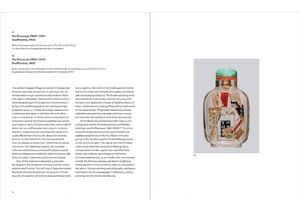The 8 Brokens
Chinese Bapo Painting
Developed during the mid-19th century in China, the bapo (or "eight brokens") painting genre combines ingeniously realistic depictions of antique documents, such as calligraphies, rubbings, paintings and pages from old books, sometimes alongside everyday contemporary ephemera, including advertisements, receipts and postmarked envelopes.
The resulting, seemingly haphazard, overlapping compositions contain coded reflections on the decay of cultural traditions, or wishes for the recipient's good fortune. Widespread in the late 19th and early 20th centuries, bapo was never popular with the upper echelons of the Chinese art world, and as a result was never recorded in art-history texts or mentioned by cultural critics. It became a lost branch of Chinese art―almost completely forgotten for the past 60 years.
This book explores the origins of bapo in Chinese visual culture and traces how it blossomed into an intriguing and inventive tradition in the hands of many artists.
The resulting, seemingly haphazard, overlapping compositions contain coded reflections on the decay of cultural traditions, or wishes for the recipient's good fortune. Widespread in the late 19th and early 20th centuries, bapo was never popular with the upper echelons of the Chinese art world, and as a result was never recorded in art-history texts or mentioned by cultural critics. It became a lost branch of Chinese art―almost completely forgotten for the past 60 years.
This book explores the origins of bapo in Chinese visual culture and traces how it blossomed into an intriguing and inventive tradition in the hands of many artists.











